"Unconventional yet Fundamental": Equinox Coach, RKC Paul Kolososki
By Adrienne Harvey, SrPCC, RKC-II, CK-FMS
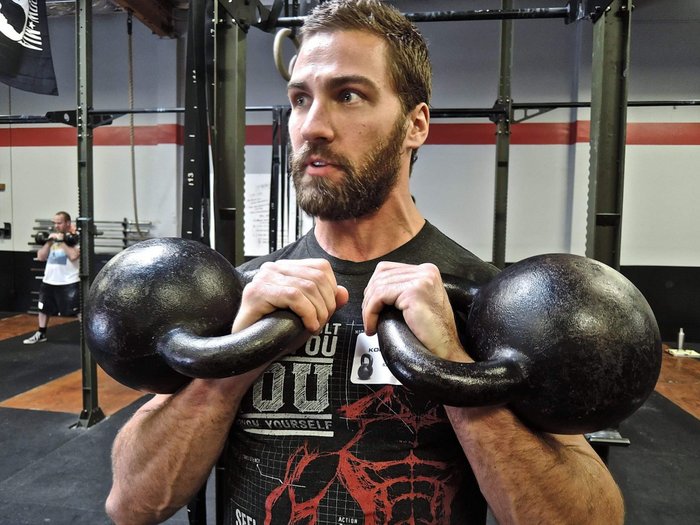
Dragon Door: How did you decide to become a personal trainer and coach?
Paul Kolososki: I'm originally from Chicago, born and raised. When I was about 14 years old, I moved to Okemos, Michigan. I went to Ferris State University in Big Rapids, Michigan for an Allied Health degree in Radiology. After graduation, I worked in Detroit for three years as an x-ray tech, and that’s when I really started to educate myself about fitness and nutrition. I started to realize my passion was more with the fitness field than the medical field—so I began to actively follow that feeling. I started watching YouTube, reading books and articles. And I also started studying for NASM. I passed the NASM test, moved to California, and have been working for Equinox in Palos Verdes for about 4 years now. I made the whole transition in a little less than two years!
Dragon Door: That's a lot of change over a short period of time! How did you make that happen?
Paul Kolososki: Thank God for my parents! They’ve always been very supportive in everything that I do, and told me to let them know if I needed help. So when I told my mom and dad that I couldn't do the hospital thing anymore, they were both very supportive. I'm the youngest of five, so Mom immediately told me I could move home. She wanted me there. So, I moved home for a year, studied for NASM, and saved to move to California.
During the same time, I worked at a Vitamin Shoppe, and would workout at the local Equinox—which is where I found kettlebells. Of course, I was into bodybuilding at the time, but when I saw one of the trainers do a Turkish get-up, I thought it was the coolest thing I'd ever seen and wanted him to teach me how to do it. Soon, he taught me the swing and the get-up. From there I couldn’t put the kettlebell down. So, I've been training with kettlebells for the last five years and have really cleaned up my form in the last two years. Two of the gentlemen I work with have really helped me work on my technique. I love
kettlebells.
Dragon Door: What brought you to the RKC in San Jose?
Paul Kolososki: One of the guys from work told me to sign up for Dragon Door's email list. In getting all the emails from Dragon Door, I saw one about
Dan John teaching an RKC in San Jose. I had to be there! Since I was able to sign up early and save $500, I jumped on it.
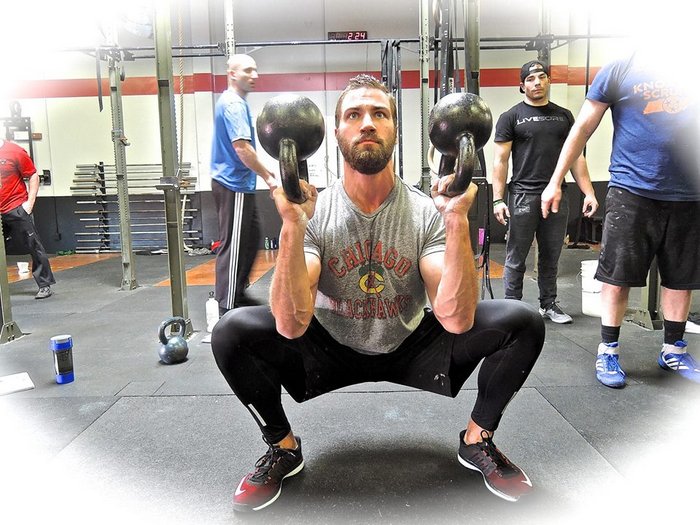
Dragon Door: What do you like most about Dan John?
Paul Kolososki: Ever since I started with kettlebells, I have also been interested in the kettlebell community. One name that kept popping up was Dan John. I read
his books, articles, and watched him on YouTube. He is the type of gentleman that you cannot help but give your undivided attention to him when he’s speaking. He is able to articulate and paint a picture that anyone at any level can understand.
Dragon Door: What was your favorite move or insight you enjoyed the most at the RKC?
Paul Kolososki: My best and favorite exercise is the Turkish get-up. It mimics the fundamental movements from crawling to walking—and everyone has to get up from the ground. I’ve been doing the get-up for a long time, and understand what needs to be done, but just one simple correction from Dan John made it even more efficient. It’s fascinating that even after doing get-ups for five years, there was still something I could tweak to make the move a little more fluid. It’s proof of how applicable get-ups are.
Dragon Door: It’s fascinating how working with small nuances can make these moves stronger and more beneficial. What are some of your favorite ways to teach these ideas?
Paul Kolososki: If one of my clients is swinging, I can tell them to go harder until I am blue in the face, but can’t see what they're doing internally. Some of my clients are pretty good "actors", and swings get tough and exhausting. For example, at the
RKC I didn’t want to disappoint the instructors, so I made sure to give it my absolute all. Even then,
Chris Holder gave a perfect teaching example. He told us to do ten hardstyle swings, and then said, "Do you feel how hard you were swinging? Imagine I put a gun to your head and told you to swing harder. That's what I want you to do this round, now do it!" Because I didn’t want to disappoint him, I really went as hard and ballistic as I could.
These situations are where the trainer-client relationship is important. When I was first hired, my manager told me that
personal training is 50% training and 50% personal. If our clients are able to trust us, they can really learn from our instructions. We're not trying to reinvent the wheel here; we're just trying to help our clients be healthier, stronger people.
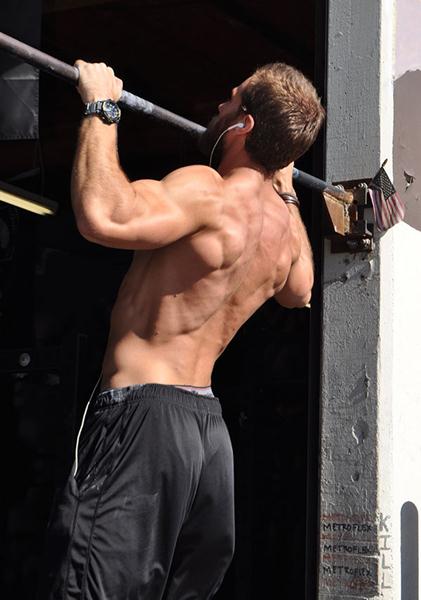
Dragon Door: Who are you training at Equinox?
Paul Kolososki: Palos Verdes is its own little community. I mostly train older adults, doctors, lawyers, CEOs of their own companies. My clients range from a gentleman who wants to make sure he can keep picking up the groceries without hurting his back, to a women who just had a tumor removed from her knee, to a guy who wants a workout that will kick his butt. It's a good mix of personalities. And the best part is, whatever the goal, issue, or programming, it always involves kettlebells.
Dragon Door: Do your clients specifically come to you for kettlebell training, or do you introduce them to kettlebells?
Paul Kolososki: I have to educate them from the beginning. One of the hardest things to teach my clients is that
kettlebell training is mental as well as well as physical. A kettlebell doesn’t lie. As silly as it sounds, you have to respect it, and you need to have full body awareness. If you want to get the full, safe benefits of the kettlebell, you must learn to understand your body. Once my clients are able to fire their torso, glutes, hamstrings—and lock in and pack those shoulders—then everything starts to come together. Then I can teach them the benefits of the hip hinge, swings, squats and so forth. An example of a workout we do is four rounds of a kettlebell deadlift to a farmer carry. We’re very easy with it. Nothing is meant to be rushed. When we have a reassessment—and I reassess about every six weeks—my clients always say the same thing, "Everything I do here transfers outside. When I carry my kid, I am packing my lats down, I'm engaging my glutes." It’s really cool to know that they're listening.
Dragon Door: Even though you just earned your RKC, what else are you working towards in your own training?
Paul Kolososki: I love Tough Mudders and Spartan Races. I just ran a race about a month ago, and I'm doing another Tough Mudder in about a month. I’ve also started school this semester and am taking two online courses. I'm around 16 credits away from earning my bachelor's degree in Applied Sciences, so I’ve decided that in 2016 I’m going to be proactive in finishing a bachelor’s. I also hope to do the
RKC Level II soon, but need to start training for it.
Dragon Door: Obstacle course races are very popular, do you have any training advice for these races?
Paul Kolososki: Yes, keep it simple. If we think about the attributes of power, speed, strength, conditioning, range of motion, and proprioception, I know two things that will improve all of them: the kettlebell swing and the Turkish get-up. When it comes to my training, I am 100% certain that kettlebells helped me in the Spartan Race, and have made me a better athlete. I have a much greater work capacity. Kettlebells can help someone running a Spartan Race, but they can also help someone who may be having difficultly getting out of bed.
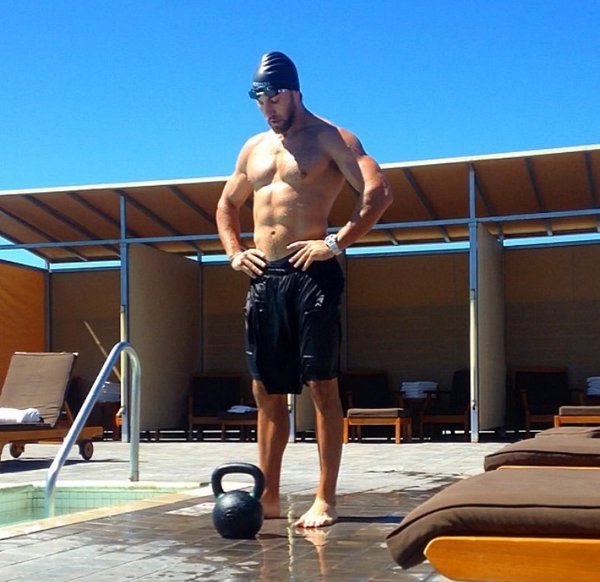
Dragon Door: Other than a greatly increased work capacity, what other benefits do kettlebells have for obstacle course competitors?
Paul Kolososki: Kettlebell swings are all about staying grounded. There’s so much force in a swing, and it all starts from the ground. I have to make sure that even my big toes are on the ground, and that I’m driving my feet into the ground. When I am running through mud in a Spartan Race, I'm doing the same thing. When I am climbing up a hill with rocks on my shoulders, it all starts from the feet—I'm driving my feet into the ground. I wouldn't to be able to carry all those rocks without the hips I have from ballistic kettlebell training.
While I love training, I really love coaching. Hopefully my clients can see that passion. It’s so cool when someone starts to understand the scope of what the kettlebell can do for them. I love being able to help my clients be pain free, injury free, lose weight, and be stronger. When we reassess every six weeks I love to hear them say that they feel better than ever before. I love the style of training I do, it's very unconventional, yet it’s also very fundamental. It’s about being strong and healthy. It's less about six-pack abs and more about helping my clients to be ready for any situation. I want them to be able to hike, swim, climb, and crawl. It's about getting the body to work as one unit, and I think that’s the goal. And it's fun.
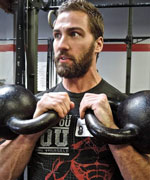 Paul Kolososki is a personal trainer at Palos Verdes Equinox Gym. Follow him on Facebook: Paul Kolososki and Instagram: Paul_koz. He can be contacted at PaulKolososki@gmail.com
Paul Kolososki is a personal trainer at Palos Verdes Equinox Gym. Follow him on Facebook: Paul Kolososki and Instagram: Paul_koz. He can be contacted at PaulKolososki@gmail.com
Back